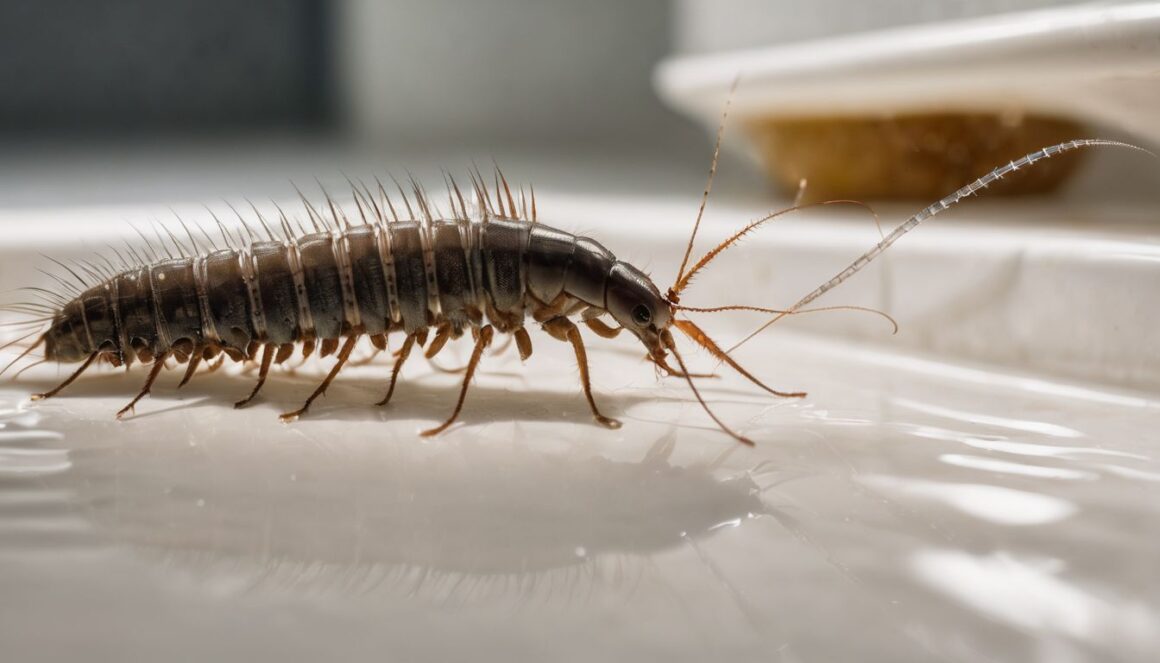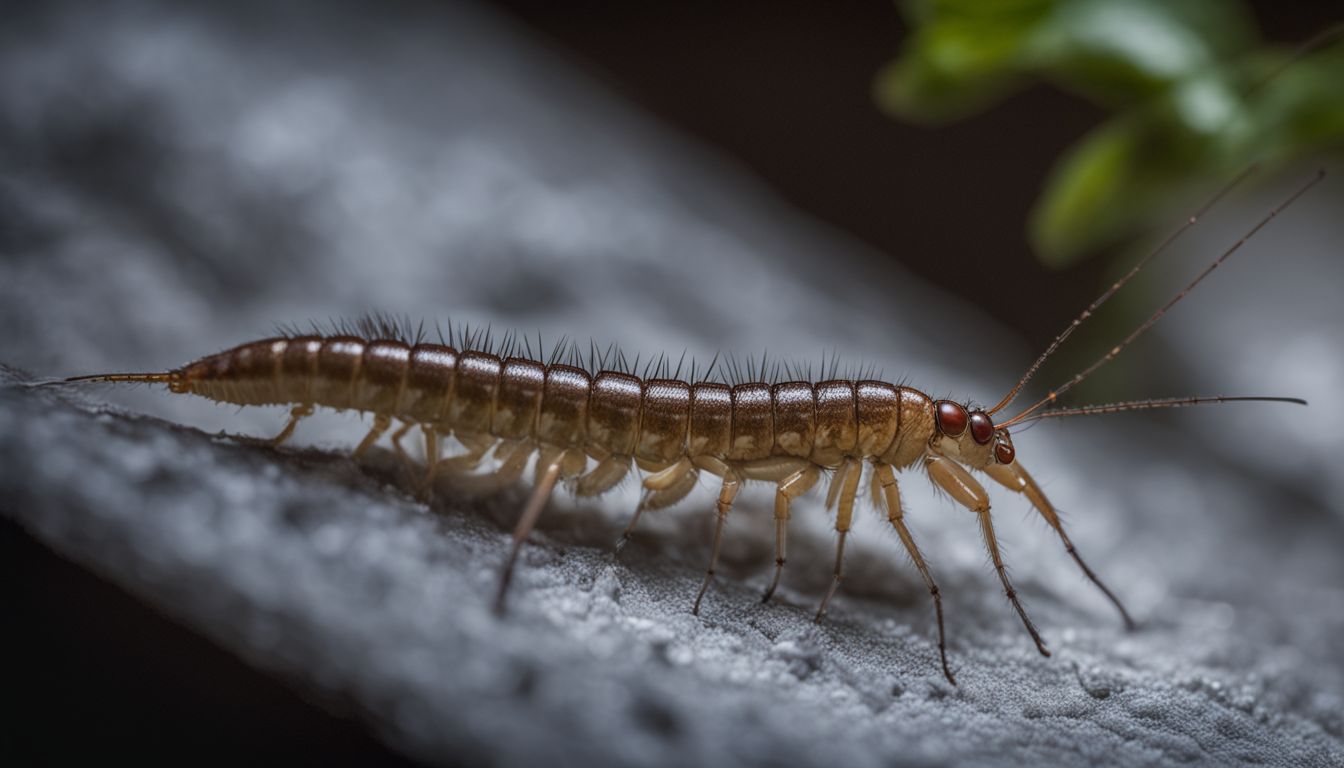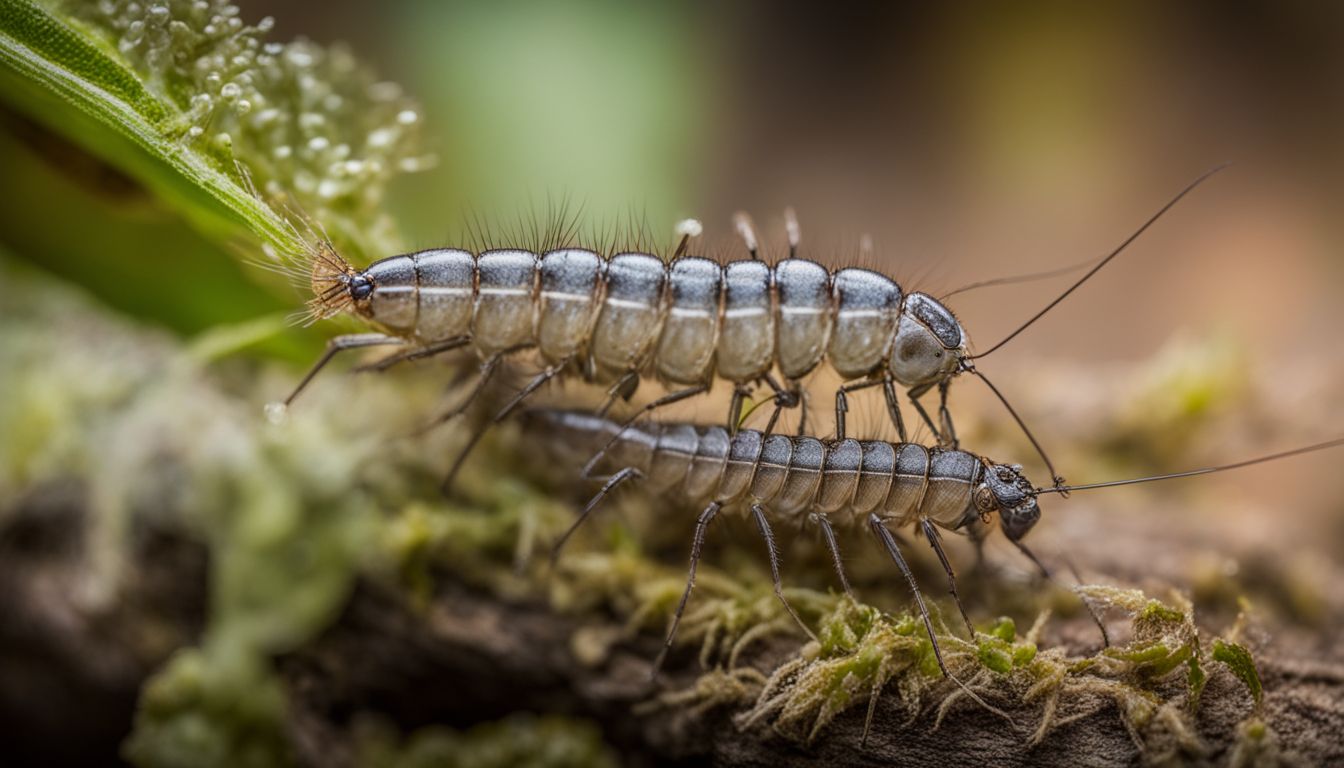Have you spotted a creepy crawler zipping across your floor and can’t tell if it’s a house centipede or a silverfish? Interestingly, though they might look similar at first glance, these two pests are quite different.
This article will guide you through the key differences between them so that you can identify and deal appropriately with your unwanted guests. Keep reading to become an expert on these skittering intruders!
Major Findings
- House centipedes and silverfish are different; centipedes have long bodies with many legs and silver bands, while silverfish are smaller with shiny scales.
- Centipedes hunt bugs like spiders and roaches, helping control pests. Silverfish damage items by eating paper, glue, and clothes.
- To spot an infestation, look for centipede droppings or fast movement, and check for holes or stains from silverfish.
- Keep them out by sealing cracks and reducing moisture. Use traps or natural deterrents like diatomaceous earth to remove pests.
- If you can’t get rid of these pests on your own, call a professional pest control service.
What Are House Centipedes and Silverfish?
House centipedes and silverfish are two distinct types of arthropods that you might encounter slinking around your home. Despite sometimes being lumped together, each possesses unique characteristics and behaviors that set them apart in the world of household pests.
Appearance and Characteristics
House centipedes stand out with their long, slender bodies and dark bands across a grayish-yellow exoskeleton. They sport 15 pairs of legs that can grow longer as they age, appearing like many tiny threads moving quickly across floors and walls.
These pests have thread-like antennae that help them navigate the nooks and crannies of your home.
Silverfish bugs glisten with a shiny silver or gray color all over their bodies. Unlike house centipedes, they have shorter antennae and lack the distinct dark stripes. Their teardrop-shaped bodies move in a fish-like manner, which is how they get their name.
With these visual clues in mind, we can explore the differences between these two creatures even further.
Common Misconceptions
People often mix up house centipedes and silverfish. They think both insects move at the same speed and act the same way. But they’re quite different! Some folks get scared, thinking centipedes bite badly and silverfish are harmless.
This isn’t totally true; while a house centipede can bite, it rarely happens to humans.
Another big mistake is mixing up what these pests eat. Centipedes hunt other bugs, which can help control pests in your home. On the other hand, silverfish munch on things like books, wallpaper, and clothes.
Lastly, many people don’t know that centipedes have one pair of legs per body segment, while silverfish do not have as many legs or segments.
Differences in Appearance and Behavior
Discover the unique traits that set house centipedes and silverfish apart, from their distinct looks to where they choose to make their homes. Uncover how their differing appearances correlate with contrasting behaviors that impact your living space.
Physical Differences
House centipedes boast long, slender bodies with noticeable dark bands across their backs. Their segmented bodies give them a larger appearance, especially with antennae that can be twice their body length.
Silverfish won’t reach the same size as house centipedes and lack such prominent markings. They have shiny, silver-gray scales that shimmer as they move.
Centipedes flaunt 15 to 177 pairs of legs which are much longer than the six small legs you’ll find on a silverfish. These many-legged creatures often startle homeowners as they scurry across floors with surprising speed.
In contrast, silverfish movements are more secretive and less alarming due to their smaller size and slower pace.
Habitat Preferences
House centipedes love moist and humid spots. They often hang out in bathrooms, basements, and crawl spaces where it’s damp. Silverfish also seek out dark, wet areas to live. You can find them hiding in kitchens and bathrooms as well as basements.
Both pests need these conditions to survive, so they’re always looking for the perfect spot around your home.
These critters make themselves at home where we least want them. Knowing their favorite places helps us keep an eye out for any signs of infestation. Next up, let’s dive into the damage house centipedes and silverfish can do if they’re not stopped in their tracks.
Potential Damage Caused by Centipedes and Silverfish
House centipedes serve as unexpected allies in pest control, targeting unwelcome insects, while silverfish pose a threat to your pantry and paper goods with their voracious appetites.
Understanding how each critter impacts your home environment is crucial for effective management and prevention strategies.
House Centipedes: Natural Pest Control
Centipedes in your home may seem like a nuisance, but they actually play a useful role. These speedy bugs hunt spiders, bed bugs, roaches, and other small pests. Unlike silverfish that contaminate food, house centipedes help to clean out unwanted pest guests.
They have long antennae and dark bands on their bodies as they scurry across floors at night.
Using chemicals for pest control can be harmful and costly. House centipedes provide a natural method instead. They are quick enough to catch even the fastest spider without causing any damage to your home.
If you see these many-legged insects around, remember they are there to protect your space from other critters!
Silverfish: Food Contaminators
Silverfish sneak into your home and go after your stuff. They love to munch on anything with cellulose, like the paper in books or wallpaper glue. These bugs also enjoy a good snack on shampoos and clothes, mainly if they’re made from natural fibers.
At night, silverfish get busy destroying things around the house.
They are not picky eaters and will attack book bindings and important papers without mercy. If you see tiny holes or scrapings on paper items or fabric, silverfish might be your uninvited guests.
Controlling moisture helps keep them away because they thrive in damp places. Use dehumidifiers to dry out rooms like attics where these pests often hide.
How to Identify and Get Rid of Centipedes and Silverfish
Discovering the telltale signs of a centipede or silverfish infestation is the first step to reclaiming your home from these unwelcome guests. Unearth effective strategies for eradicating these critters, ensuring they don’t become permanent residents in your space.
Signs of Infestation
House centipedes and silverfish leave different signs when they infest a home. Spotting these signs can help you know if you’re dealing with either insect.
- Look for small, pepper – like droppings from house centipedes in dark corners.
- Silverfish leave tiny holes and yellowish stains on clothes, wallpaper, and books.
- You may find shed skins from growing silverfish in areas like basements.
- House centipedes are fast runners; seeing one scurry across a wall or floor is a clue.
- Dead silverfish found around the home suggest an active infestation.
- Watch for moisture problems as high humidity attracts pests like silverfish and house centipedes.
- Centipede sightings during daytime can indicate a larger problem since they usually like dark spaces.
- Check for silver damage on synthetic fabrics – unlike the centipede, silverfish feed on these materials.
DIY Prevention and Removal Methods
Centipedes and silverfish can sneak into your home. Knowing how to stop and remove them keeps your house pest-free.
- Seal cracks in walls, windows, and doors to block entry points for centipedes and silverfish.
- Reduce moisture by fixing leaks and using dehumidifiers to make the environment less inviting.
- Keep food in airtight containers so silverfish don’t find a food source.
- Regularly vacuum and declutter to remove hiding spots for pests.
- Use sticky traps near suspected activity areas to catch silverfish.
- Employ natural deterrents like diatomaceous earth or boric acid along edges where pests travel.
- Remove piles of leaves or wood from close to your home as these are perfect hiding places for centipedes.
- Ensure proper ventilation in basements, attics, and crawl spaces to deter silverfish who prefer still air.
- Consider using essential oils like lavender or peppermint as natural repellents on window sills and door thresholds.
- Contact a pest control company if DIY methods don’t solve the pest problem.
Conclusion
In the battle of house centipede vs silverfish, it’s clear they’re not the same. One acts as a tiny home guardian, chasing away other pests. The other munches on your precious belongings.
Recognize and tackle these critters to keep your home in peace. Learn their differences, and you’ll know who’s who when you spot them!
FAQs
1. What’s the difference between a house centipede and a silverfish?
House centipedes have dark, long bodies with lots of legs and can move quickly. Silverfish are smaller, have six legs, and are uniform in color.
2. Can both centipedes and silverfish be found in homes?
Yes, you might find both types of these pests scurrying across floors at home. House centipedes may bite humans, while silverfish prefer damp areas but won’t bite.
3. How can I tell if I’m dealing with a house centipede or silverfish?
Look closely: if it has dark bands on its body and many legs, it’s probably a house centipede; if it’s small, shiny, and silvery with fewer legs, then you’re likely seeing a silverfish.
4. Are there differences in how long house centipedes and silverfish grow?
Centipedes can grow much longer than an inch with their many leg appendages sticking out while most types of silverfish remain about an inch long.
5. Do pest management services handle both centipedes and silverfish?
Pest control experts know the specific species of each pest well so they use different methods like traps or sprays to get rid of them from your home effectively.
6. Why do I need to worry about getting rid of silverfish or house centipedes?
Though older centipedes are known to bite which might scare some people; having either pest could suggest that you have more hidden problems behind walls where they like to hide.

Rosemarie Rich is an accomplished editor with a passion for all things home and design. Armed with a bachelor’s degree in interior design from the prestigious New York School of Interior Design, she embarked on a journey that seamlessly blended her creative talents with her love for the written word.
With a career spanning over a decade, Rosemarie has honed her skills as both a writer and an editorial professional in the realm of home decor and design. Her keen eye for aesthetics and her deep understanding of design principles have made her a respected authority in the industry.
As the editor of Home and The Abound Blog, Rosemarie has curated content that inspires and informs readers, offering them invaluable insights into creating spaces that are both functional and beautiful. Her dedication to her craft is evident in the thoughtful articles and features she produces, each one showcasing her expertise and passion for design.
Beyond her editorial endeavors, Rosemarie is also known for her collaborative spirit, often working closely with designers, architects, and other industry professionals to bring fresh ideas to the forefront. Her commitment to excellence and her unwavering dedication to her craft continue to make her a driving force in the world of home and design.



